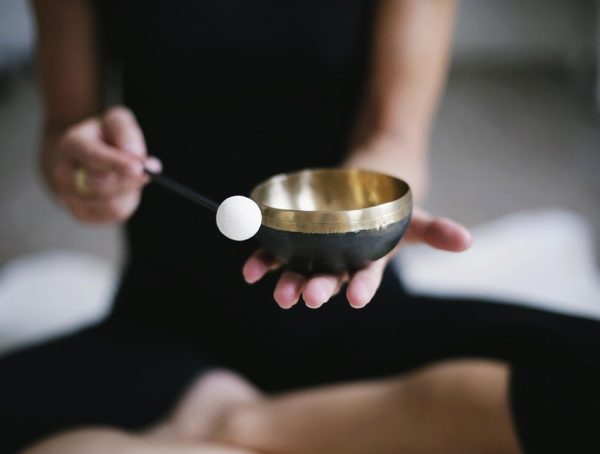Mantra Meditation for Beginners: Tips and Techniques
In today’s fast-paced world, finding a moment of peace can feel like an uphill battle. Meditation is an effective way to achieve tranquility and has been embraced by many for its potential to enhance mental clarity and emotional well-being. One powerful form of meditation that has gained popularity is mantra meditation. This practice not only calms the mind but also fosters deeper connections with oneself. If you’re a beginner looking to explore mantra meditation, you’re in the right place! Here, we’ll delve into tips and techniques to help you embark on your meditation journey.
What is Mantra Meditation?
Mantra meditation is a focused practice that involves the repetition of a word, phrase, or sound—known as a mantra. These mantras can be spoken aloud, whispered, or silently repeated in your mind. The objective is to concentrate on the mantra to quiet other thoughts, leading to a heightened state of awareness and tranquility.
Benefits of Mantra Meditation
Before diving into techniques, it’s essential to understand the myriad benefits this practice offers. Here are some advantages of mantra meditation:
- Enhanced Focus: Repeating a mantra helps sharpen concentration, making it easier to resist distractions.
- Reduced Anxiety and Stress: The calming effects of mantra meditation can lower stress hormone levels, promoting a sense of peace.
- Emotional Balance: Regular practice helps in regulating emotions and fostering a positive mindset.
- Spiritual Connection: For many, chanting a mantra can deepen their connection to their spirituality or philosophy of life.
Tips for Beginners
1. Choose Your Mantra Wisely
Selecting the right mantra is crucial for your practice. Many beginners opt for simple sound vibrations like "Om," which is believed to embody the essence of the universe. Alternatively, you can choose a phrase that resonates with you, such as "I am enough" or "Peace." It should feel positive and affirming.
2. Find a Quiet Space
Create a peaceful environment to facilitate your meditation experience. This could be a quiet room in your home, a tranquil corner in a park, or any place where the distractions are minimal. Make sure it is comfortable and free from interruptions.
3. Set a Comfortable Position
Sit comfortably, either on a cushion, chair, or floor. You could cross your legs or rest your hands on your knees, palms facing up or down. Align your spine, keeping your body relaxed but attentive. You may also choose to lie down if that feels more natural to you, but be cautious, as it can induce sleepiness!
4. Begin with Short Timeframes
As a beginner, starting with short meditation sessions, around 5 to 10 minutes, can help prevent feelings of frustration. Gradually increase the duration as you become more familiar with the practice.
5. Focus on Your Breath
Before you start repeating your mantra, take a few deep breaths. Inhale deeply through your nose, hold for a moment, and exhale slowly through your mouth. This helps to settle your mind and body. Then, begin to introduce your mantra into your practice.
6. Repeat Your Mantra
As you inhale, silently or audibly say your mantra. As you exhale, focus on its sound and vibration. If your thoughts drift, gently bring your focus back to the mantra. It’s natural for the mind to wander, so don’t worry—just redirect your attention.
7. Close Your Practice Mindfully
When your meditation time is up, don’t rush to get up. Spend a few moments reflecting on the experience. Acknowledge any thoughts or feelings that came up during your meditation. Transition slowly back into your day, taking that sense of peace with you.
Action Steps for Your Journey
-
Research Various Mantras: Spend some time exploring different mantras and their meanings. Choose one that resonates deeply with you.
-
Set a Daily Reminder: Establish a specific time for your mantra meditation. Setting a reminder can help you build a consistent practice.
-
Journal Your Experiences: Consider keeping a journal to reflect on your thoughts, feelings, and progress with your mantra meditation. Detailing your experiences can provide insight over time.
-
Join a Community: Seek out meditation groups, either online or in-person, to connect with others who share your interest. Sharing experiences can reinforce your practice and encourage growth.
- Be Gentle with Yourself: Understand that meditation is a skill that requires patience. There will be good days and those that may feel challenging. Allow yourself to grow into the practice naturally.
Final Thoughts
Mantra meditation is a profound and accessible practice for individuals at every stage of their journey. By integrating it into your daily routine, you can cultivate a deeper sense of tranquility and connection to yourself.
Remember, every step counts. Even when your mind wanders, gently guiding it back to your mantra is a practice in itself. So, set your intentions, keep your heart open, and embrace the journey.
Inspirational Reminder
"Set your mind on a definite goal and observe how quickly the world stands aside to let you pass." – Napoleon Hill
If you found this article helpful, be sure to follow Kevin on Instagram (@KSteineman) for more inspiring content on wellness and mindfulness!
You might also like
More from Meditation
The Role of Mantras in Transcendental Meditation: A Deep Dive
The Role of Mantras in Transcendental Meditation: A Deep Dive Transcendental Meditation (TM) has garnered a significant following across the globe, …
The Science Behind Meditation: Improving Mental Health Naturally
The Science Behind Meditation: Improving Mental Health Naturally In today's fast-paced world, the pursuit of mental wellness has become paramount. Thousands …
Understanding the 7 Types of Meditation for Beginners
Understanding the 7 Types of Meditation for Beginners: A Path to Inner Peace Meditation has become a popular practice in recent …


































